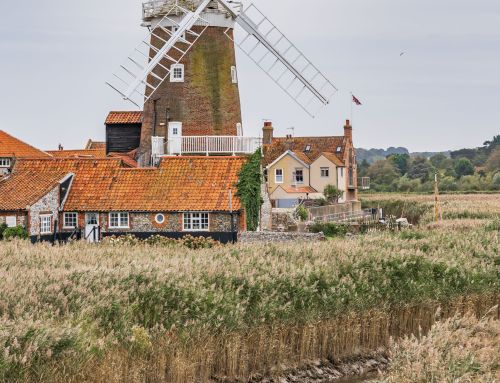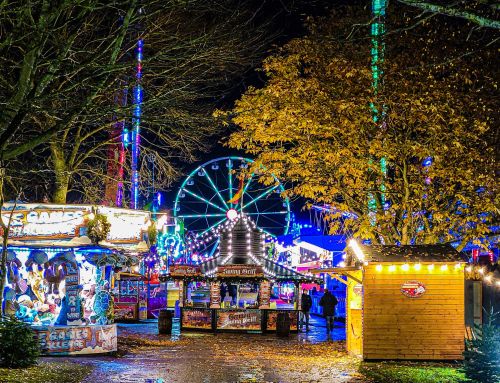Felbrigg Hall, Gardens and Estate
Why not visit one of Norfolk’s most notable period properties, Felbrigg Hall
As a leading holiday home agency, Norfolk Cottage Agency have shared their insights on the best places to visit and things to do in Cromer. One local attraction to our Cromer holiday cottages, is popular National Trust property Felbrigg Hall.
About Felbrigg Hall
Felbrigg Hall is one of the most elegant country houses in East Anglia, and is a mixture of opulence and homeliness – a property where each individual room reflects the house’s rich and vibrant history.
The decorative and productive walled garden is a delight for all, with flowers from around the garden used to decorate the Hall and allotments in frequent use to provide fruit and vegetables for the Squire’s Pantry.
Families can enjoy a relaxing day out, with stroller and pushchair-friendly surfaces on the main visitor routes.
Visiting the Hall at Felbrigg
Each room stirs the imagination, and you can discover a place of surprises and delights in one of East Anglia’s most elegant country houses.
The Family Rooms
The Great Hall is home to many stained glass windows, several of which date back to the 15th Century and some reinstalled from St Peter Mancroft Church in Norwich.
The Dining Room features a table which takes you through 400 years of dining, including the do’s and don’t of table etiquette.
The Drawing Room was originally known as the Great Parlour, once the main reception and dining room throughout the late 17th Century and remodelled in 1751 by James Paine and the original ceiling dating back to 1687 was kept along with its intricate plasterwork which shows game birds, fruit and flowers.
The Cabinet Room was originally square and panelled, until the bay window was added in 1751. This room was transformed by William Winham II into a Cabinet used to display the pictures and objects collected from a European Grand Tour.
The Library contains approximately 5,000 books including a copy of Dr Johnson’s famous dictionary with the oldest book in the collection dating back to 1509.
The Chinese Bedroom was originally two rooms, uniting in 1751 with the wallpaper imported by the East India Company and block-printed and hand-painted in China.
The Working Rooms
A house like Felbrigg had to be self-sufficient in many ways in the Victorian times. Separate rooms were designed for domestic tasks, such as: Game Larder, Bake House, Pump House, Brew House, Larder, Scullery – and that’s a list of rooms that aren’t typically on show.
The Kitchen has been in the same spot since the early 18th Century, and features two long oak tables. One table is 18th Century, and the other is Victorian. The last squire installed an Aga.
The South Corridor was designed to assist with an ever-present danger in the country house – fire. A rudimentary precaution at Felbrigg was a set of leather and metal fire buckets.
The Turnery was used by William Windham II for the popular 18th Century pastime of wood and ivory turning.
Visiting the Hall at Felbrigg
On a pleasant day, we recommend taking some time to explore the garden at Felbrigg to discover the widely renowned Walled Garden, West Garden and 18th-Century Orangery.
Felbrigg Garden in the Winter
Much of the planting within the garden is evergreen, featuring plants such as Myrtle, Irish Yew, and Laurel – and in the West Garden you’ll find camellias and hellebores carpet larger parts of the woodland.
The Walled Garden
While the garden itself is traditional, you will find many modern surprises hidden within – including one of the few octagonal working dovecotes in the country. Within the Walled Garden, you’ll be able to breathe in the scent of lavender, sage and mint.
The West Garden
You can follow the gravel paths in the West Garden, amongst the trees and shrubs and enjoy the sights, scents and sounds which surround the house.
The Orangery
Originally built in 1704, the Orangery was designed to blend into the west wing of the house. In the 19th century, the building was given a glass roof which in 1958 fell in and had to be replaced with the roof you see today.
The Orangery
Originally built in 1704, the Orangery was designed to blend into the west wing of the house. In the 19th century, the building was given a glass roof which in 1958 fell in and had to be replaced with the roof you see today.
Enjoy the Estate at Felbrigg
Rolling parkland, lakes and waymarked paths are simply some of the space to explore while visiting Felbrigg Hall – which expands over 520 acres of woodland.
The Great Wood
The main purpose of this specific expanse of woodland was timber production, and today you’ll find a wide variety of trees of all ages, including ancient beeches, oak, sweet chestnut, hawthorn, ash and sycamore.
The Ice House
Designed deliberately to look like a ruin, the Ice House has a shaft 28 feet deep and is a keen place for Felbrigg’s bats to hibernate. It’s thought that this building may have been built using bricks taken from a demolished section of the 17th-century park wall.
The Lake
A beautiful spot to lazily unwind during long summer days, today the lake is home to a considerable amount of wildlife and you can enjoy beautiful views as you walk around it.
Wondrous Wildlife
With plenty of diverse habitats – there’s something for every animal lover, with Golden Plover rising from the parkland and the odd hare and stoat running silently up a furrow. If you’re lucky you may even spot a weasel, which is occasionally seen tiptoeing around the car park or walled garden.
Birds
When visiting Felbrigg – you can often spot barn owls and little owls gliding silently over fields, and tawny owls can often be seen in the Great Wood. Farmland birds such as skylarks, linnets and yellowhammers are often attracted to the area, and you may even overhear Great Spotted and Green woodpeckers nearby.
Dragonflies
The lake and wetlands are excellent habitats and places to spot common species of dragonflies and damselflies in the summer months.
Bats
With the estate surrounded by woodland – this makes the perfect habitat for eight species of bat to be found, including the Natterer’s bat and the rare Barbastelle. Old hollow trees and over 100 bat boxes across the estate make perfect nesting locations for these creatures.
Deer
If you’re lucky enough to visit the estate during quieter hours – such as within the early hours of the day – you may catch a glimpse of one of four types of deer: Roe, Red, Muntjac, and Chinese Water. Please make sure to keep your distance from these wonderful animals, though.
Staying Nearby
If you’re looking for somewhere to stay closeby to excellent Norfolk locations such as Felbrigg Hall, please check out our Cromer self-catering holiday cottages. For more information on visiting Felbrigg Hall – or if you have any other questions regarding North Norfolk breaks, please get in touch with us! We’re always more than happy to make sure you have the perfect stay.






